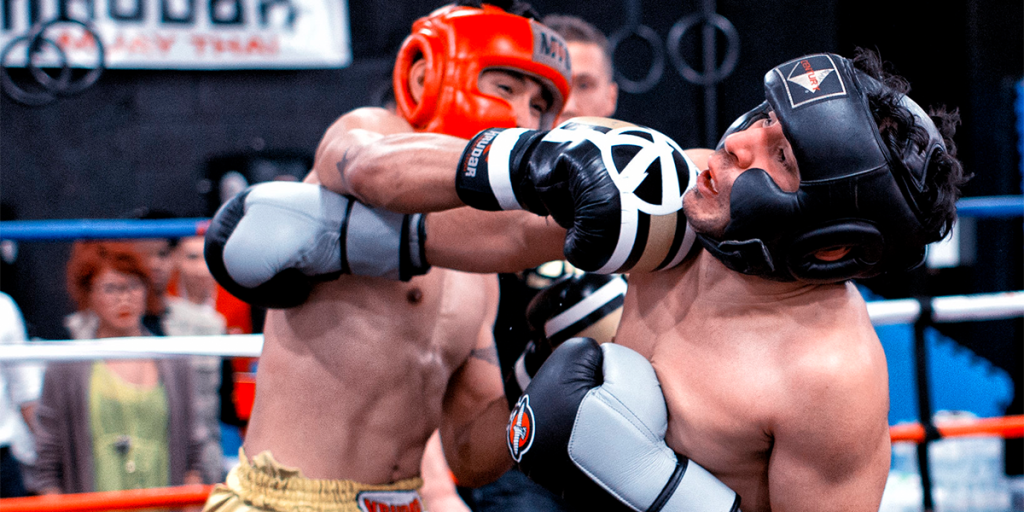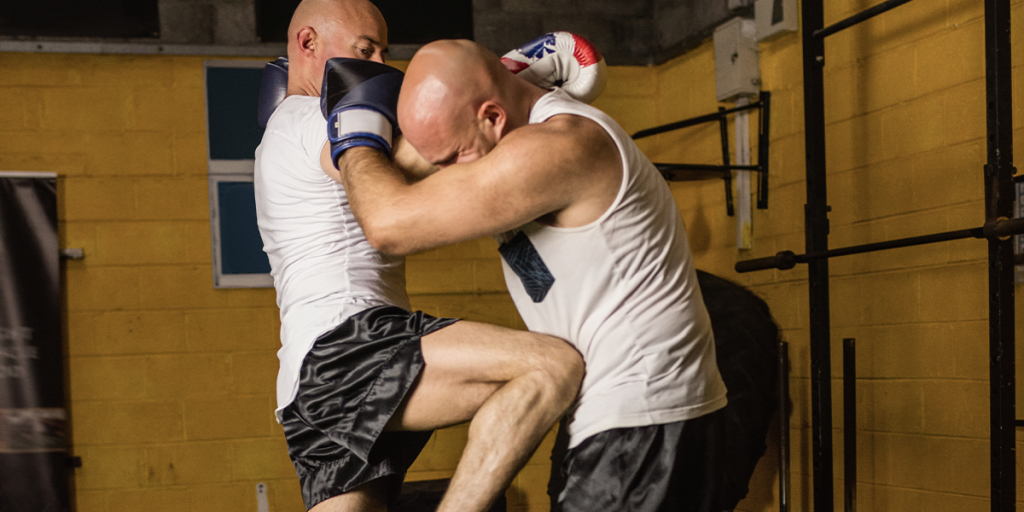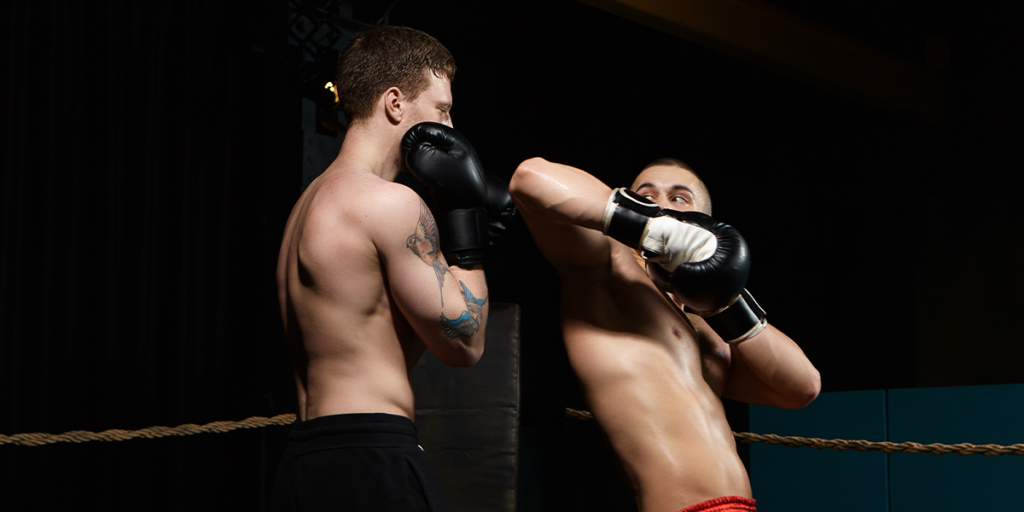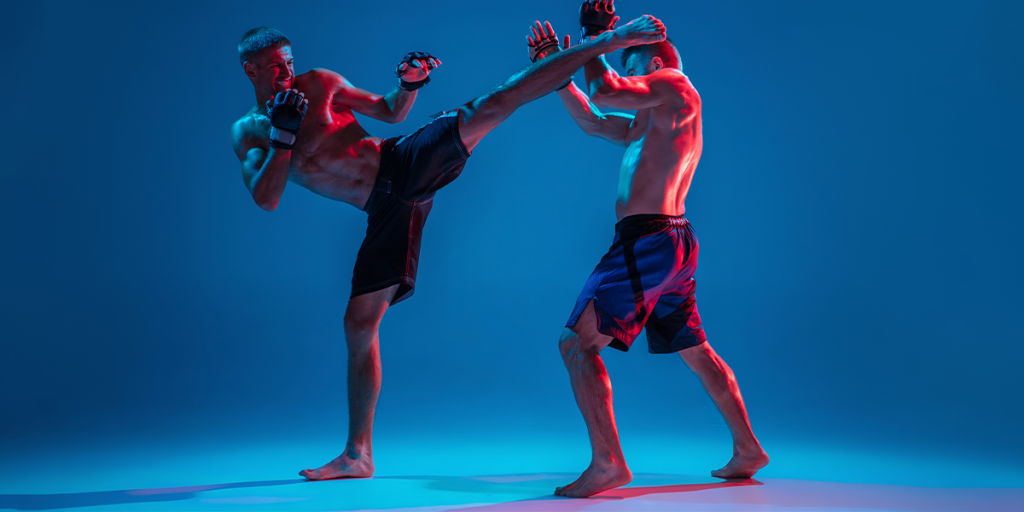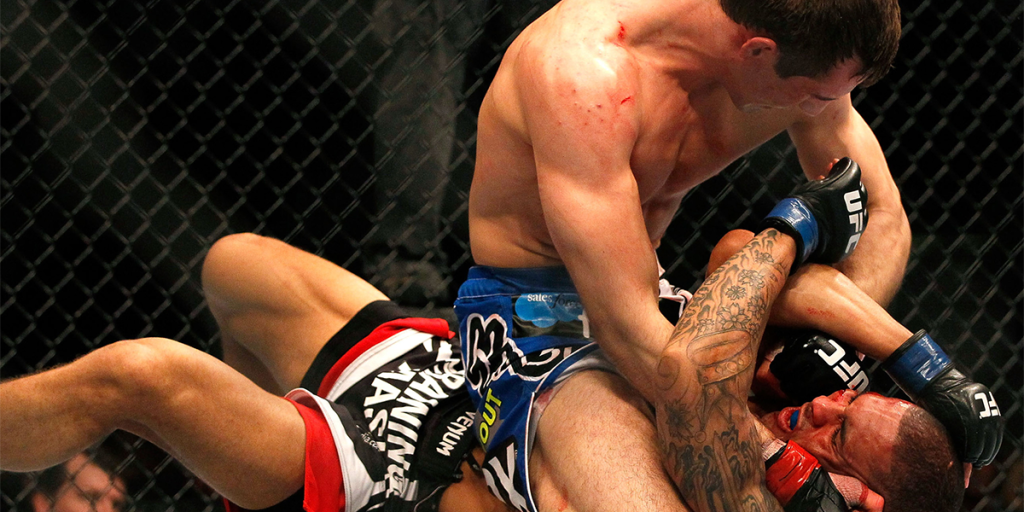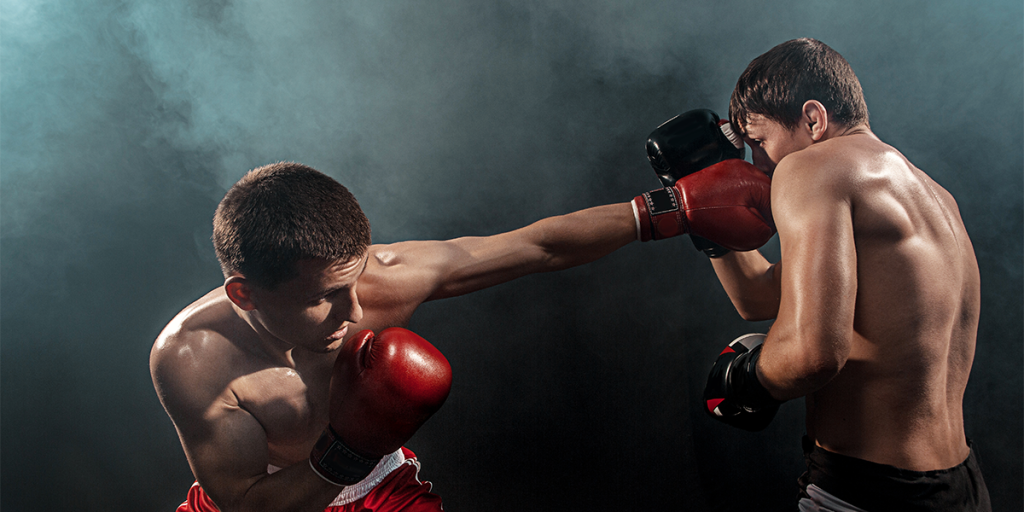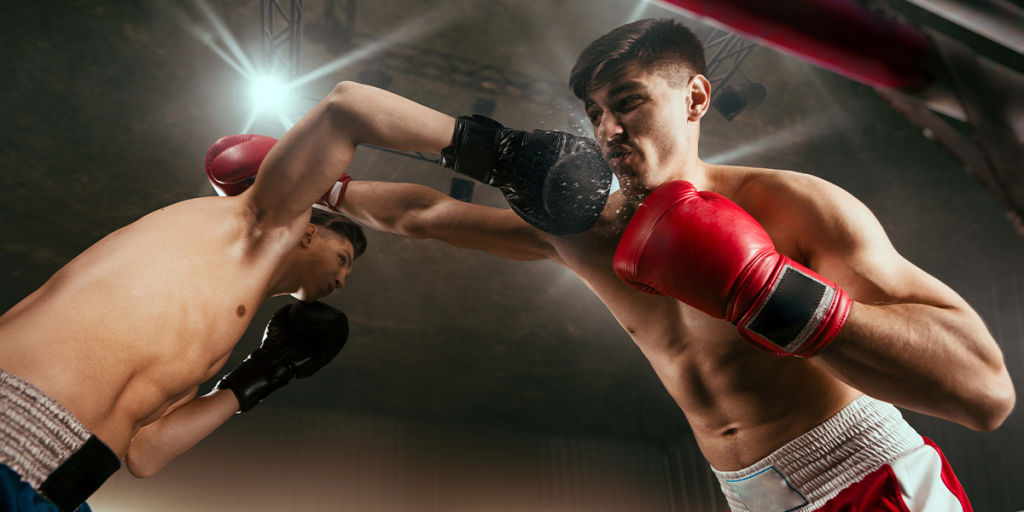Muay Thai Vs. Kickboxing – How Both Combat Sports Differ
Muay Thai, known as the “Art of Eight Limbs,” is raw, powerful, and relentless. Fists, elbows, knees, and shins become your tools of domination, turning your entire body into a weapon. You fight like a warrior, using every part of your body to strike with precision and force. In comparison, kickboxing is fluid, fast-paced, and technical. It hones your agility through quick punches and kicks, demanding balance, speed, and sharp combinations in constant motion.
| Muay Thai | Kickboxing |
| Origin: Thailand Striking Points: 8 limbs (fists, elbows, knees, shins) Techniques: Punches, kicks, elbows, knees, Clinching and sweeping Style: Full-body, powerful strikes Focus: Power, versatility, and clinching techniques Combat Strategy: Heavy on offense and defense, with a focus on using all limbs for striking and clinching Training: Intense conditioning, including shin strengthening and clinch work Apparel: Muay Thai shorts, groin guard, hand wraps, gloves | Origin: Thailand Striking Points: 8 limbs (fists, elbows, knees, shins) Techniques:Punches, kicks, elbows, knees, Clinching and sweeping Style: Full-body, powerful strikes Focus: Power, versatility, and clinching techniques Combat Strategy: Heavy on offense and defense, with a focus on using all limbs for striking and clinching Training: Intense conditioning, including shin strengthening and clinch work Apparel: Muay Thai shorts, groin guard, hand wraps, gloves |
Are Kickboxing and Muay Thai the Same? Which One to Learn
Both sports challenge you physically and mentally, but they are not completely the same. Muay Thai focuses on power and full body conditioning, while kickboxing involves speed and striking techniques.
Are you unsure which path to take? You’re standing at the edge of two martial arts paths- Muay Thai vs. kickboxing each offering its own exciting journey.
Which one fits your goals, style, and passion?
They say, “The more you sweat in training, the less you bleed in battle.”
But what kind of battle are you training for?
1. The Significance of Muay Thai
The full-contact combat sport of muay thai holds great cultural significance in Thailand. It is the national sport of Thailand and is taught as a cultural martial art in many Thai schools. Originally, soldiers were taught to utilize their entire body as a weapon during muay thai training. Because it permits the use of punches, kicks, knees, and elbows to take down an opponent and guarantee maximum defense, it is known as The Art of Eight Limbs.
1.2 Attacking Techniques in Muay Thai
The exposure of Western Boxing to Muay Thai has improved the sport’s overall offense. Professional fighters adopted several punching, kicking, and grappling techniques from different combat sports and utilized them in their Muay Thai arsenal with their unique style.
- Punches: Most punching techniques in a Muay Thai fighter’s arsenal come from Western Boxing, with a slight variation. These include lead jabs, hooks, crosses, uppercuts, overhead punches, shovels, corkscrew punches, and back/hammer fists.
- Knees: A single knee strike can effectively knock out any opponent and end the fight. Knees are usually thrown to the opponent’s rib cage or thighs during clinching or to the head by jumping.
- Elbows: Elbow strikes are so brutal that several sports, such as kickboxing and MMA, consider them forbidden. A perfectly delivered elbow strike can cause cuts on the opponent’s body and knock him out. Elbows can be thrown from different angles, including sideways to the head, spinning back elbow, from the top down, reverse to the chin, jump elbow chop, and forward elbow thrust.
- Kicks: Thai kicking techniques are the most effective among combat sports and are adopted by practitioners of several other martial arts. The most famous ones are roundhouse kicks and foot jabs, while others include Diagonal, Half-shin, Axe heel, Step-up, and jump kick.
- Clinch fighting: Clinching is an effective technique in Muay Thai that allows defense, striking, and takedowns within close range. Body locks prevent the opponent from striking; arm locks create openings for knee strikes, and foot sweeps and hip throws allow quick takedowns.
1.3 Muay Thai Defensive Techniques
Thai boxing involves ruthless striking using every limb of your body as a weapon to take out your opponent. Such a brutal combat sport also demands equally effective defensive techniques.
- Guarding: It is a fundamental defensive stance in Muay Thai to protect the head, body, and legs. Fighters keep their hands high to shield the head, elbows tucked in to protect the ribs, and legs ready to check kicks.
- Checking Kicks: A Muay Thai fighter has extremely strong shins trained by kicking heavy bags. Checking involves lifting the leg with your shin angled outward to block an incoming kick.
- Parrying: A common defensive technique that allows a fighter to redirect the opponent’s strike away from the body with a quick, controlled motion..
- Footwork: Similar to Western Boxing and MMA, footwork is essential for maintaining balance, positioning, and avoiding strikes. Quick, precise steps allow fighters to move out of range, circle their opponent, and create angles for attacks and counters.
- Clinch Defense: This involves pummeling, framing, and pushing techniques to prevent the opponent from controlling the clinch or breaking free from it
1.4 Rules of Muay Thai!
To help you grasp the spirit of Muay Thai, here’s a song that breaks down its 3 golden rules.
| The 3 Golden Rules of Muay Thai: A Fighter’s Song |
| (Verse 1) Rule one—keep your guard up high, Elbows close, don’t let punches slip by. Hands up strong, protect your face, Stay sharp, stay ready, and control the pace.(Chorus) Muay Thai, Muay Thai, with fists and knees, Master the art, and fight with ease. Punch, kick, elbow, knee—you’ll see, These are the rules, the heart of Muay Thai’s key!(Verse 2) Rule two—balance is your friend, Stay grounded strong, from start to end. Shift your weight, stay light and tight, Control your stance, and win the fight.(Chorus) Muay Thai, Muay Thai, with fists and knees, Master the art, and fight with ease. Punch, kick, elbow, knee—you’ll see, These are the rules, the heart of Muay Thai’s key!(Verse 3) Rule three—respect the warrior’s way, Train with honor, fight with heart each day. Use all eight limbs, fight smart and true, In Muay Thai, it’s all in you!(Chorus) Muay Thai, Muay Thai, with fists and knees, Master the art, and fight with ease. Punch, kick, elbow, knee—you’ll see, These are the rules, the heart of Muay Thai’s key! |
Isn’t it a great idea to memorize the rules of a game by turning them into a song? By keeping these lyrics in mind, you can stay engaged and focused while playing the game.
1.5 Muay Thai Apparel and Equipment
Muay Thai in comparison to kickboxing, is more brutal, using eight limbs for a broader range of techniques, elevating the need for protective gear and competition attire.
Muay Thai Shorts:
Thai boxing shorts are made from strong, flexible materials for durability and unrestricted movement. Professional fights mandate the use of shorts similar to those in boxing and MMA, without zippers, pockets, or projecting objects. Shorts must match the fighter’s corner color:
- Red, pink, or maroon for the red corner.
- Blue, bright blue, or black for the blue corner.
Competition Gloves:
Muay Thai gloves have a rounder shape, with padding to protect the hand, and are less stiff for clinching. Rules for competition gloves include:
- Leather must not exceed half the glove’s weight, and inner pads must weigh at least half the total.
- Altering the shape of the pads is prohibited.
- Glove sizes: 6 oz for Mini Flyweight to Featherweight, 8 oz for Super Featherweight to Welterweight, and 10 oz for Super Welterweight and above.
- Glove laces must be tied behind the wrists.
- Gloves must be inspected and stamped.
Hand Wraps:
Hand wraps protect the palm and wrist, supporting the ligaments. Governing bodies mandate hand wraps for professional fights.
- Wraps must be a maximum of 6 meters long and 5 cm wide.
- A one-meter-long, 2.5 cm-wide plaster tape can be applied to the wrist or back of the hand, but not the knuckles.
- Only stadium-provided wraps are allowed.
Groin Protector and Mouthguards:
Muay Thai requires groin protectors and mouthguards. Groin guards must be tied at the back, and fighters must wear approved, form-fitted gum shields.
Other attire rules:
- WMO allows long hair and beards, provided they are tied back; WMC prohibits them.
- Fighters can wear Mongkol during the Wai Kru ritual, but it must be removed for the fight.
- Amulets can be worn but must be covered by soft material.
- Metal decorations, jewelry, vaseline, and lubricants are prohibited.
2. The Significance of Kickboxing!
Kickboxing is a full-contact hybrid martial art that combines kicking and punching techniques from various styles. It requires high levels of physical fitness, toughness, and agility. Despite the lack of a single governing body, kickboxing remains very popular in Japan, Europe, and the US, and it is the national sport of Thailand.
2.1 Techniques Involved in Kickboxing
Kickboxing’s power and versatility lie in its combination of striking techniques from various martial arts. Mastering these techniques requires dedication, practice, and an understanding of their proper execution.
Stance and Movement: Kickboxing utilizes a specific stance that provides balance, stability, and power for launching strikes.
- In Orthodox Stance, the left foot is positioned slightly forward of the right foot, with the left arm being the lead arm extended in front. This stance is dominant for right-handed fighters.
- Conversely, Southpaw Stance has the right foot forward and the right arm extended as the lead arm. This stance is dominant for left-handed fighters.
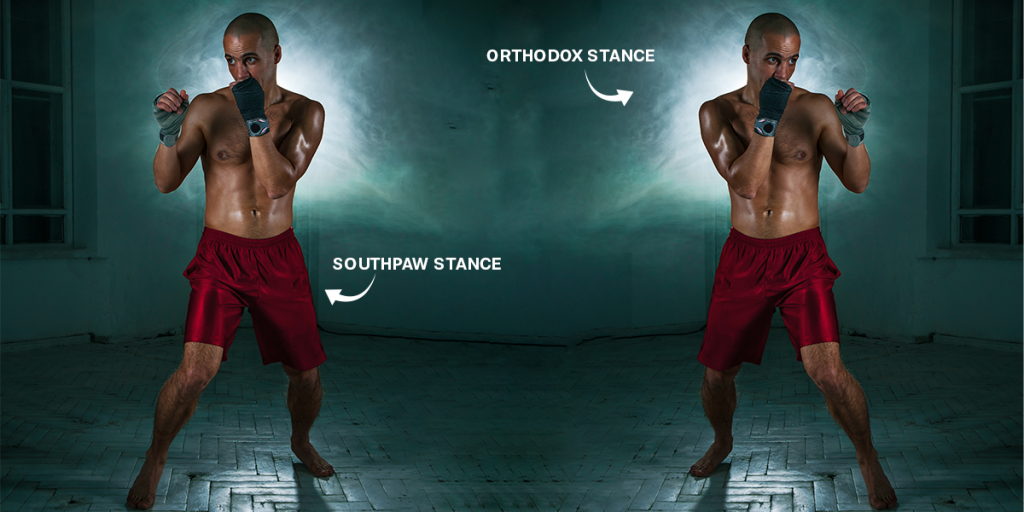
Footwork: Footwork plays a vital role in effective movement. Kickboxers employ various footwork drills to develop agility, maintain distance control, and evade attacks. Techniques include shuffles, pivots, and lunges, allowing fighters to navigate the ring strategically.
Punches and Kicks: Every kickboxing style incorporates an arsenal of punching techniques similar to boxing.
- Jab: A fast, straight punch thrown with the lead arm to establish range, disrupt the opponent, and set up other strikes.
- Cross: A powerful punch thrown with the rear hand in a diagonal motion, aiming for the opponent’s head or body.
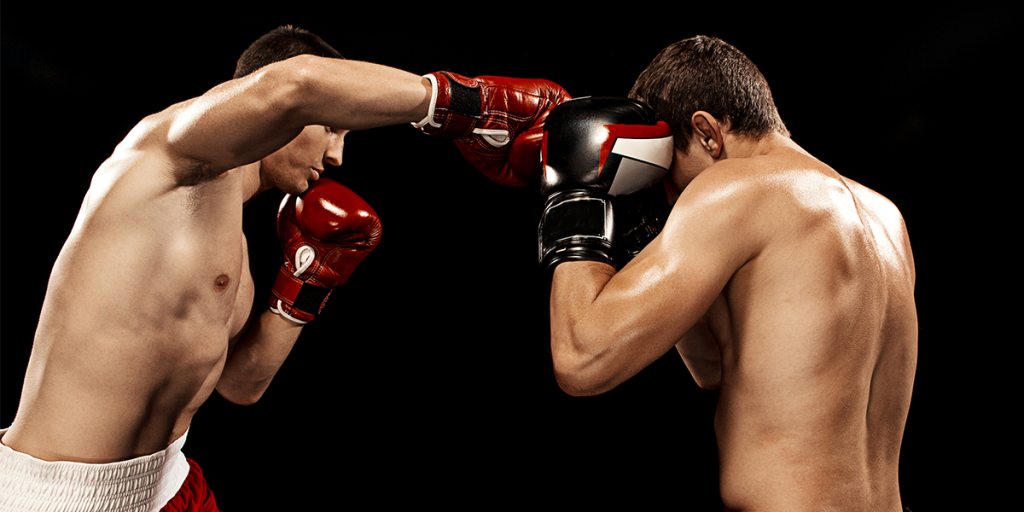
- Hook: A short, powerful punch thrown with a bent elbow in a circular motion, targeting the opponent’s head or body.
- Uppercut: A vertical punch thrown upwards with the rear hand, aiming for the opponent’s chin or body.
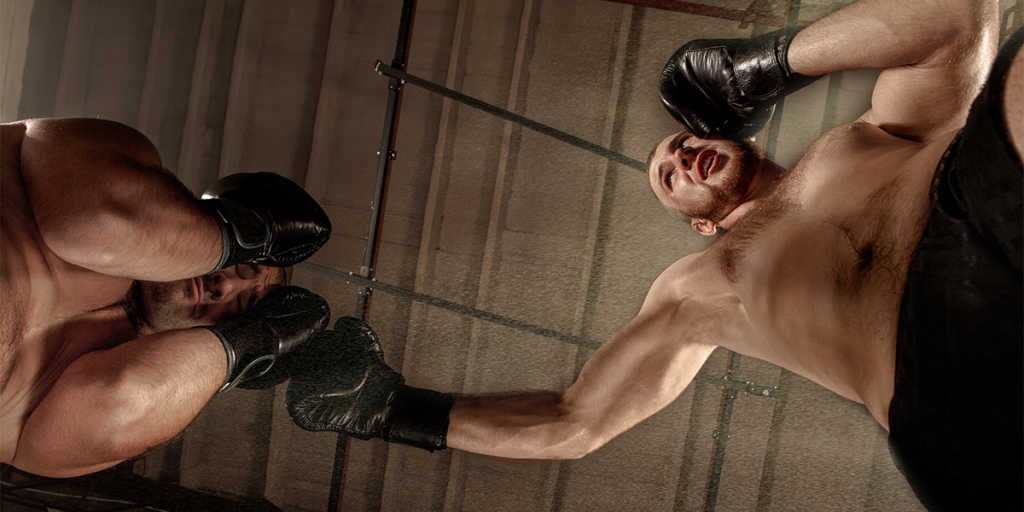
2.2 Kickboxing Defensive Techniques
Defense in kickboxing is equally important as offense and includes techniques from professional boxing.
- Blocking: Using forearms, gloves, or shin guards to absorb or deflect incoming strikes.
- Parrying: Redirecting an incoming punch or kick with your gloves or forearms to create counterattack openings.
- Head movement: Constant movement to evade punches and make yourself a difficult target.
- Footwork: Utilizing footwork to maintain distance and avoid getting trapped in an opponent’s attack range.
2.3 Essential Rules of Kickboxing!
Before beginning your kickboxing journey, it’s important to grasp the fundamentals that every fighter needs to succeed. This song emphasizes the three essential rules that will lead you through your kickboxing journey.
| The 3 Rules of Kickboxing: A Fighter’s Song |
| (Verse 1) Rule one—keep those hands up high, Guard your face, don’t let punches fly by. Jab and cross with speed and grace, Always protect and keep control of the pace.(Chorus) Kickboxing, kickboxing—quick on your feet, Hands and feet move to the beat. Strike with power, move with flow, These are the rules that help you grow!(Verse 2) Rule two—footwork is your friend, Light on your toes from start to end. Circle, pivot, don’t stand still, Move in and out to control the thrill.(Chorus) Kickboxing, kickboxing—quick on your feet, Hands and feet move to the beat. Strike with power, move with flow, These are the rules that help you grow!(Verse 3) Rule three—combine kicks and hands, Mix it up with your fight demands. Low, mid, high—don’t stay the same, Variety’s key to winning the game.(Chorus) Kickboxing, kickboxing—quick on your feet, Hands and feet move to the beat. Strike with power, move with flow, These are the rules that help you grow! |
2.4 Kickboxing Apparel and Equipment!
Safety and agility are important in a sport with high-intensity punches, kicks, and knee strikes. Major kickboxing promotions mandate certain protective gear and apparel.
Kickboxing Gloves:
Kickboxing gloves, unlike boxing gloves, are designed for striking, clinching, and blocking kicks. They have a square design with smaller cuffs, no mesh in the palms, and evenly distributed padding with extra protection on the back of the hand for kicks. They are also more flexible for grappling.
Competition Shorts/Trunks:
Kickboxing trunks are similar to boxing trunks, made from lightweight, moisture-wicking materials like nylon, cotton, and polyester to allow flexibility for kicks. Short leggings under the trunks are allowed if they don’t extend below the hem. Logos and sponsor names are permitted with approval.
Mouthguards and Groin Guards:
Mouthguards protect the teeth, gums, and jaw. If a mouthguard falls out, the referee pauses the match for it to be replaced. Groin guards, made from plastic blends with gel padding, protect against accidental low blows. Fighters must wear approved groin guards under their trunks.
Other essential equipment includes:
- Hand Wraps: Support the wrist and ligaments, preventing injury during punching and blocking.
- Shin Guards: Not allowed in competition but necessary for training and sparring.
- Rash Guards: Universal training shirts that wick moisture and keep fighters cool. Many fighters prefer them over regular shirts to reduce fatigue during training.
Final Thoughts
Whether you’re aiming for powerful strikes or agile footwork, both Muay Thai and Kickboxing offer a path to mastering the art of combat. In Muay Thai vs. Kickboxing, each discipline has its own unique strengths, techniques, and strategies that cater to different fighting styles. The choice ultimately depends on what aligns with your passion and goals as a fighter.
Now, you can decide:
- Looking for power, versatility, and clinching? Muay Thai might be your best fit.
- Prefer speed, footwork, and fluid striking? Kickboxing is the way to go.
Whichever you choose, both will test your limits and help you grow as a fighter.
FAQs
Should you learn Muay Thai or Kickboxing?
If you prefer a more diverse striking arsenal with clinching, start with Muay Thai. For a faster-paced, hands-and-kicks-focused style, kickboxing is a great entry point.
Can women take part in kickboxing?
Yes women can take part in kickboxing. It provides a dynamic way to strengthen the overall fitness.
What is the age limit for Muay Thai?
Always keep in mind that there is no specific age limit for muay thai. Kids as young as seven can start training.
Why does Muay Thai beat kickboxing?
Muay Thai beats kickboxing due to its use of elbows, knees, and clinching techniques, which are not allowed in traditional kickboxing. This gives Muay Thai fighters more striking options and control in close-range combat.
